Design your trip to Lebanon
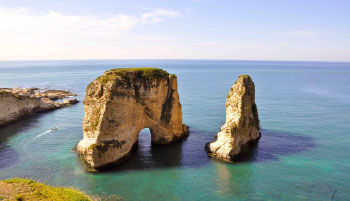 Lebanon (Arabic: لبنان Libnān), officially the Lebanese Republic (Arabic: الجمهورية اللبنانية al-Jumhūrīyah al-Lubnānīyah), is a sovereign state in Western Asia. It is bordered by Syria to the north and east and Israel to the south, whilstCyprus is west across the Mediterranean Sea. Lebanon’s location at the crossroads of the Mediterranean Basin and the Arabian hinterland facilitated its rich historyand shaped a cultural identity of religious and ethnic diversity. At just 10,452 km2, it is the smallest recognized country on the entire Asian continent.
Lebanon (Arabic: لبنان Libnān), officially the Lebanese Republic (Arabic: الجمهورية اللبنانية al-Jumhūrīyah al-Lubnānīyah), is a sovereign state in Western Asia. It is bordered by Syria to the north and east and Israel to the south, whilstCyprus is west across the Mediterranean Sea. Lebanon’s location at the crossroads of the Mediterranean Basin and the Arabian hinterland facilitated its rich historyand shaped a cultural identity of religious and ethnic diversity. At just 10,452 km2, it is the smallest recognized country on the entire Asian continent.
Despite its small size the country has developed a well-known culture and has been highly influential in the Arab world. Because of its financial power and diversity in its heyday, Lebanon was referred to as the “Switzerland of the East” during the 1960s, and its capital, Beirut, attracted so many tourists that it was known as “the Paris of the Middle East”. Furthermore, Lebanon has the highest Human Development Index and GDP per capita in the Arab world, to the exclusion of the oil-rich economies of the Persian Gulf.
Full Day Beirut + Harissa + Byblos
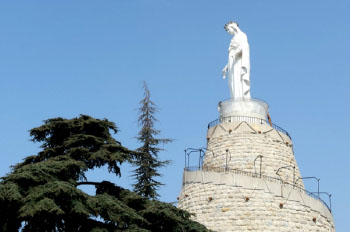 Drive to the downtown district to see the huge reconstruction project-taking place to create a new commercial and residential district of the 21st century. This project has actually discovered that the capital is standing on the site of a very ancient settlement going back at least 5,000 years. Recent excavations have uncovered important archaeological sites from Canaanite, Phoenician, and Persian, Roman, Byzantine, Omayyad, Abbassid, Crusader, Mamluke and Ottoman eras. The 1.80 sq. meters reconstruction project includes new buildings but constructed in the traditional style, besides hundreds of old structures that have been restored and renovated to its original shapes, including Beirut’s souks and historical mosques and churches.
Drive to the downtown district to see the huge reconstruction project-taking place to create a new commercial and residential district of the 21st century. This project has actually discovered that the capital is standing on the site of a very ancient settlement going back at least 5,000 years. Recent excavations have uncovered important archaeological sites from Canaanite, Phoenician, and Persian, Roman, Byzantine, Omayyad, Abbassid, Crusader, Mamluke and Ottoman eras. The 1.80 sq. meters reconstruction project includes new buildings but constructed in the traditional style, besides hundreds of old structures that have been restored and renovated to its original shapes, including Beirut’s souks and historical mosques and churches.
Proceed to Corniche road and stop for a short walk in the favorite promenade of many Beirutis. Further along, the road climbs steeply to a cliff edge, which is the headland of Beirut, with an array of cliff-top restaurants and cafes-, a panoramic view of the bay and famous Pigeon’s Rock. The road then leads down, stretching out a beautiful sandy beach and a prestigious residential area of Ramlet El-Baida. Tour ends with a visit to the National Museum.
Drive 20km along the highway north of Beirut to visit the Dog River, for its commemorative inscriptions that have been left behind by conquering armies between 2nd millenium BC. and 1949 AD.
Proceed along the coastal road to Jounieh; take the Telepherique up to the outstretched arms of the Virgin of Lebanon in Harissa- a breathtaking view of the bay.
Discover a town that goes back 7,000 years; and the world’s oldest continuously inhabited. Located 37km north of Beirut, Byblos is a quite charming small town of great history. Visit its ancient sites, and then explore the old part of the town on foot, starting from fishermen’s harbor, leading uphill towards the Church of St. John the Baptist and souks.
Full Day Baalbeck & Anjar
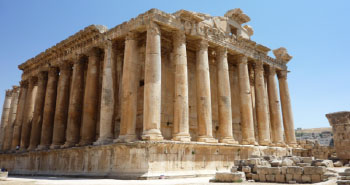 Cross Mount Lebanon range and drive through Beqaa plain towards Baalbeck, 85km from Beirut, to visit Lebanon’s greatest Roman treasure, counted among the wonders of the ancient world. The site includes the temples of Jupiter, Bacchus & Venus, with the remarkable Great Court and the Hexagonal Forecourt. Drive to Ksara Caves for wine tasting (not applicable on Sundays), with a stop in Aanjar, to visit this historical Omayyad site, located in the southern part of the plain.
Cross Mount Lebanon range and drive through Beqaa plain towards Baalbeck, 85km from Beirut, to visit Lebanon’s greatest Roman treasure, counted among the wonders of the ancient world. The site includes the temples of Jupiter, Bacchus & Venus, with the remarkable Great Court and the Hexagonal Forecourt. Drive to Ksara Caves for wine tasting (not applicable on Sundays), with a stop in Aanjar, to visit this historical Omayyad site, located in the southern part of the plain.
Full Day Byblos – Jeita
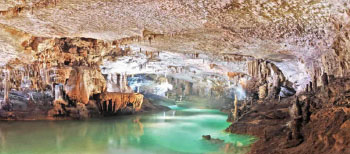 Discover a town that goes back 7,000 years; and the world’s oldest continuously inhabited. Located 37km north of Beirut, Byblos is a quite charming small town of great history. Visit its ancient sites, and then explore the old part of the town on foot, starting from fishermen’s harbor, leading uphill towards the Church of St. John the Baptist and souks.
Discover a town that goes back 7,000 years; and the world’s oldest continuously inhabited. Located 37km north of Beirut, Byblos is a quite charming small town of great history. Visit its ancient sites, and then explore the old part of the town on foot, starting from fishermen’s harbor, leading uphill towards the Church of St. John the Baptist and souks.
Continue to visit the Jeita Grottoes
Half Day Beiteddine + Deir El Kamar
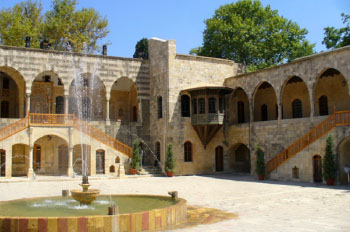 Drive to the downtown district to see the huge reconstruction project-taking place to create a new commercial and residential district of the 21st century. This project has actually discovered that the capital is standing on the site of a very ancient settlement going back at least 5,000 years. Recent excavations have uncovered important archaeological sites from Canaanite, Phoenician, and Persian, Roman, Byzantine, Omayyad, Abbassid, Crusader, Mamluke and Ottoman eras. The 1.80 sq. meters reconstruction project includes new buildings but constructed in the traditional style, besides hundreds of old structures that have been restored and renovated to its original shapes, including Beirut’s souks and historical mosques and churches.
Drive to the downtown district to see the huge reconstruction project-taking place to create a new commercial and residential district of the 21st century. This project has actually discovered that the capital is standing on the site of a very ancient settlement going back at least 5,000 years. Recent excavations have uncovered important archaeological sites from Canaanite, Phoenician, and Persian, Roman, Byzantine, Omayyad, Abbassid, Crusader, Mamluke and Ottoman eras. The 1.80 sq. meters reconstruction project includes new buildings but constructed in the traditional style, besides hundreds of old structures that have been restored and renovated to its original shapes, including Beirut’s souks and historical mosques and churches.
Proceed to Corniche road and stop for a short walk in the favorite promenade of many Beirutis. Further along, the road climbs steeply to a cliff edge, which is the headland of Beirut, with an array of cliff-top restaurants and cafes-, a panoramic view of the bay and famous Pigeon’s Rock. The road then leads down, stretching out a beautiful sandy beach and a prestigious residential area of Ramlet El-Baida. Tour ends with a visit to the National Museum.



